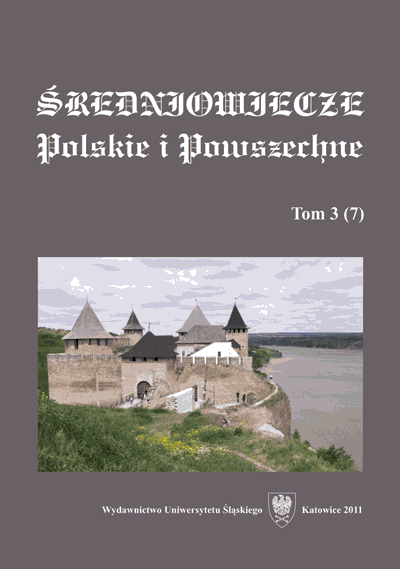Elity chłopskie w Polsce w XV—XVI wieku (Rodziny Bąków-Tomczyków i Zegadłów w podlubelskiej wsi Konopnica)
Peasant elites in Poland between the 15th and 16th centuries (Families of Bąk-Tomczyk and Zegadło in Konopnica, a village near Lublin)
Author(s): Małgorzata Kołacz-ChmielSubject(s): History
Published by: Wydawnictwo Uniwersytetu Śląskiego
Summary/Abstract: The article presents the functioning of a rural elite in Konopnica, a village situated in the area of a domination of a big urban centre, that is Lublin, on the example of two peasant families. It derives from the considerations that the social group, like in other settlements, comprised people characterised by a good material status, unblemished reputation and high regard among the remaining inhabitants. The evidence was numerous examples of their positions in a rural self-government and their nomination to guarantors in neighbours’ arguments and looking after orphan children. In the case of a suburban village, however, the neighbourhood of a town gave possibilities of gaining high incomes, higher than in other settlements, which was a condition to be in the elites. Untypical were also sources of wealth which in the case of peasant elites was usually the effect of incomes from a sufficiently big acreage of plowing fields and, possibly, craft services. In the case of Konopnica, an emphasis was put rather on the exploitation of the possibilities of becoming rich via a close proximity of the market for the products from their own farm.
Journal: Średniowiecze Polskie i Powszechne
- Issue Year: 2011
- Issue No: 7
- Page Range: 186-204
- Page Count: 19
- Language: Polish

